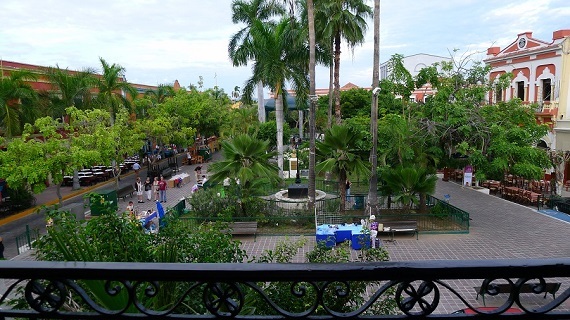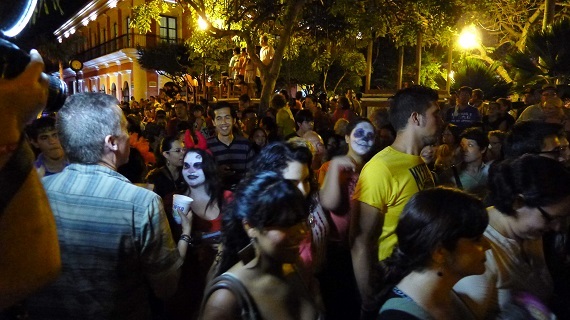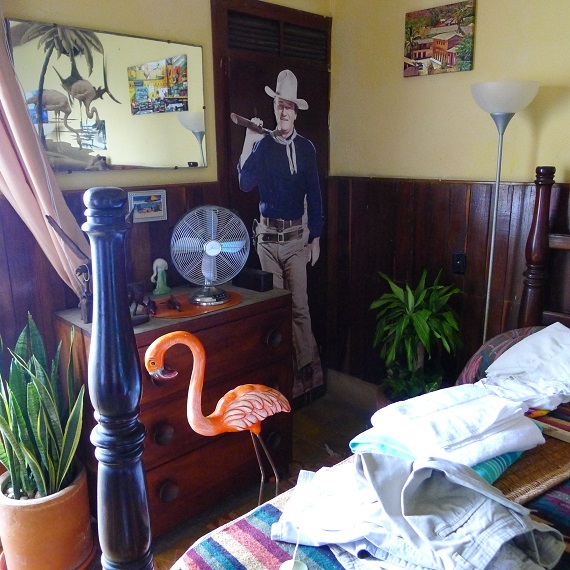No one's really sure why he came to Mazatlan, but in the late 1820s a fellow from the Philippines showed up on the docks of this little Mexican town on the Pacific. His name was Juan Nepomuceno Machado, and he created something that's since been enjoyed by millions of visitors to Mazatlan - everyone from foreign miners to old-time movie stars to modern-day tourists.
Local legends say Machado was drawn to Mazatlan by the pearl diving business there. Or perhaps by trading opportunities at the town's busy deep-water port. Or maybe by the silver mines outside town in the nearby Sierra Madres.
Whatever the reason, he went on to build a block-long plaza said to have looked much like a neo-classical European town square. It was likely ringed by porticoed walkways, shops behind wrought-iron lattices, small inns and al fresco cafes shaded by orange trees. Tales say it was a pleasant place, where Mazatlecos could take leisurely strolls, chat with friends, catch up on the latest gossip and go to a concert in the evening.
Not surprisingly, the plaza became known as the Plazuela Machado (Plaza Machado). Some say Machado created it to prompt immigration by Europeans, particularly hard-working Germans, to replenish the mines' dwindling supply of diggers. If that was the reason, it worked. Thousands of Germans among other Europeans in fact moved in over the next few years.
Fast-forward to 1849, and the plaza again made a big hit - this time with wanna-be miners heading to the newly found gold fields of Northern California. Steam ships took them down the East Coast to the cross-country rivers and streams of Nicaragua and to the Panama Canal. On the other side, steamers waited to take them up the Pacific shores to San Francisco.
About half-way up the Mexican coast, ships packed with 49ers often stopped at Mazatlan to let the lads enjoy a little R&R at the plaza, which by then had grown into a small city full of old-world charm (and likely with places of other delights).
How Dry I Am
Next, jump to the 1920s, and Mazatlan is again in the spotlight, this time thanks to a new law up north: an amendment to the U.S. Constitution that outlawed the consumption of alcoholic drinks. It was called Prohibition.
In the States, booze was (supposedly) hard to get. But it was a whole other story south of the border. And getting there - especially if you could sail down the Pacific coast with a yacht full of friends - was half the fun.
Waiting for you at Mazatlan was not only the plaza but some of the country's earliest resort hotels, wide open for business a few blocks away on a beach called Olas Altas (arguably Mexico's oldest beach resort).
So the town filled up with foreigners again, this time with merry-making Hollywood stars, studio execs, oil barons and other miscellaneous moguls. "There were speakeasies (illegal bars) all over the States, but Prohibition was a great excuse for the stars to hop on their yachts and sail down here to get a drink," reporters were told by Gilberto Limon, Mazatlan's legendary public relations man.
Jump ahead to today, and you'll find some of the once-posh hotels on the half-dozen blocks of the old resort strip are still open. One, the Belmar - the grand Dame of Mazatlan's hotels - was known for her opulent guest rooms, lush gardens and elegant ballrooms. The Belmar, it's said, catered to Hollywood superstars of the likes of John Barrymore, Rudolph Valentino and Mae West and later on John Wayne, Tyrone Power, Rock Hudson and Gregory Peck.
And what happened to the Plaza Machado? It's not only still there, but thanks to a multi-million-dollar facelift it's the crown jewel of the city's pride and joy: a 180-block "Historic District." Lined by trees and iron benches and on three sides by outdoor restaurants, the plaza is again the cultural center of the town, enjoyed by Mazatlecos and tourists alike.
At one restaurant, Pedro & Lola, diners look out at a building across the street, now a school for the arts but once a grand hotel, where in 1883 Mexico's famous opera singer Angela Peralta stepped out on a balcony and wowed the crowds with her theme song, La Paloma. She'd come to Mazatlan to sing at the next-door Teatro Rubio opera house but died of yellow fever before the performance along with hundreds of townsfolk.
The opera house, later renamed in honor of Peralta, is open again, too. Besides operas, it hosts theatrical and dance performances, art exhibits and jazz and pop concerts.
Wander around outside the plaza and you'll find block after block of cobbled lanes lined with art galleries, sidewalk cafes, museums, jazz clubs, boutique hotels and mansions - all faithfully restored to their 19th century splendor.
Most tourists stay eight or so miles away from the plaza on the other side of Mazatlan in the 14,000 rooms of the city's modern-day resort strip, the Zona Dorada (Golden Zone). Hotel guests on the strip can either take escorted tours of the Historic District or see it on their own by getting there in doorless, jeep-like "pulmonia" cabs, roughly a 20-minute ride.
In the plaza, chances are not many tourists know they're walking around in the footsteps of the boozing movie giants of yesteryear nor in the earlier tracks of in-transit '49ers. Nor of European immigrants who once spent days toiling in the silver mines and nights soaking up the old-world delights of what turned out to be Juan Machado's legacy to Mazatlan.
Photos by Bob Schulman.




